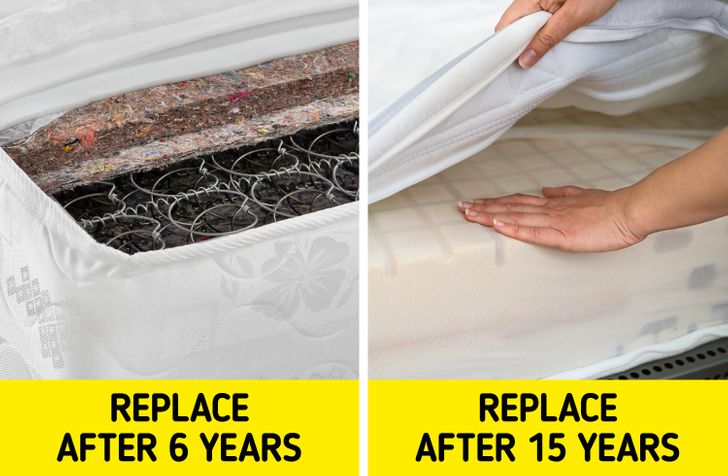Thanks! i thought that my mattress was sqeaky!
Why You Should Change Your Mattress Every 6 to 8 Years

Mattresses are one of those things that we don’t normally pay attention to or invest in. But according to a survey, we spend nearly half of our lives lying in our beds. And considering that amount of time, we need to start thinking about the importance of having a proper cushion to sleep on — especially since beds play a huge role in our well-being.
Bright Side put together a list of reasons why mattresses matter, and why investing in them is worth every penny. Watch out for the bonus tips on how to prolong your bed’s life.
Mattresses have a limited life span.
According to experts, the typical mattress has an average life span of 8 years. But the actual figure for your cushion can be higher or lower, depending on the material and product quality.
“Latex” mattresses normally come with a 20 to 25-year warranty. Meanwhile, good-quality “memory foam” can last for 10-15 years with proper care.
“Hybrid” mattresses have lower durability and usually need to be replaced after 6 years. “Waterbeds” live for anywhere between 5 to 10 years.
A worn-out mattress can disrupt a good night’s sleep and affect your health.
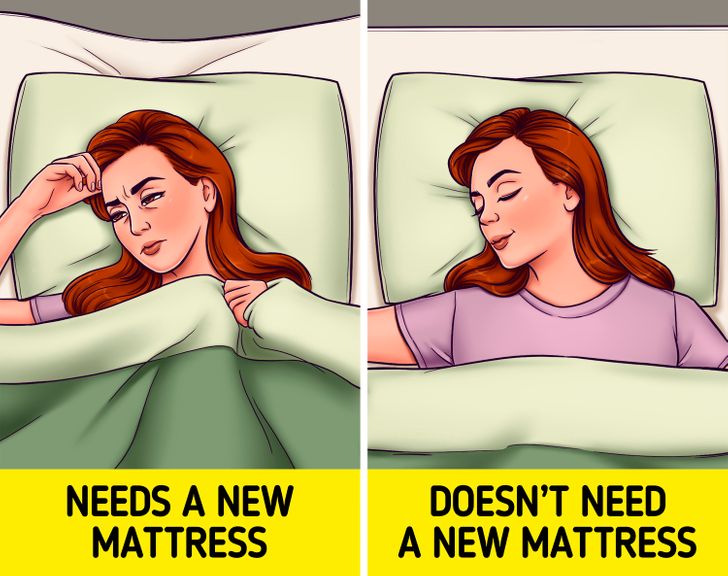
Over time, the mattress form will change and show signs of wear and tear. For example, you may have noticed that with an old cushion there’s sagging at the center or at the part where the weight is concentrated.
When mattresses start losing their supportive capabilities, they can cause discomfort and make it harder for you to catch ZZZs.
Aside from feeling fatigued and grumpy the next day, poor sleep quality could also lead to health problems, including obesity and heart disease.
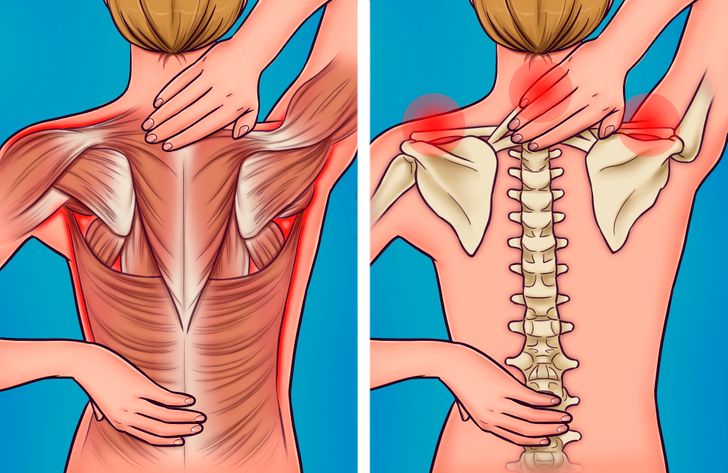
A bad mattress can also cause muscle stiffness and body pain. If you find yourself waking up and feeling sore around the neck and shoulders (and you’re sure it’s not from an injury), your mattress could be the culprit.
And based on research, new bedding systems can help improve sleep quality and reduce back discomfort.
Cushions are a haven for bed bugs and allergens.
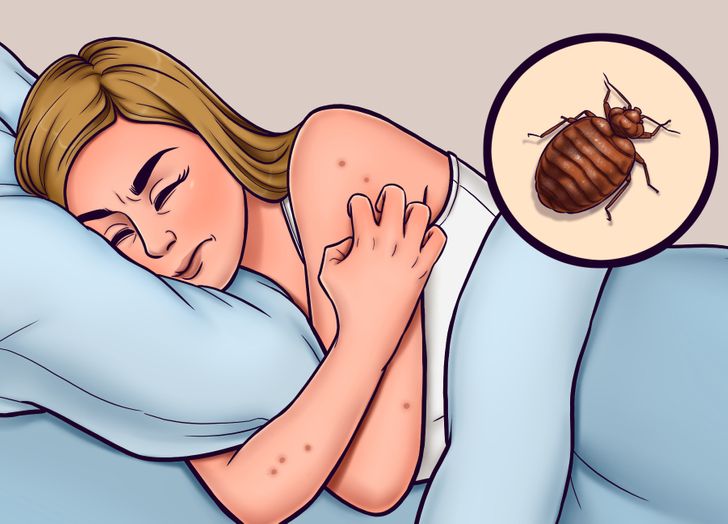
One study found that mattresses have the highest concentration of dust mites among all household items, and these bacteria multiply rapidly over time.
The mold and bugs that have taken refuge in the foam of a mattress can also trigger allergies or aggravate asthma symptoms. Experts suggest that if you notice your allergic reactions getting worse, it could be a sign that you need a new mattress.
When your bed is making a lot of noise, take it as a call for help.
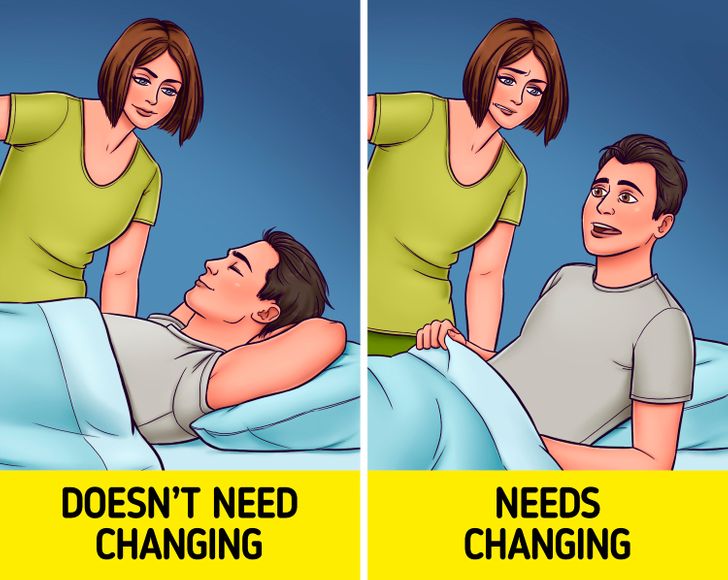
If a simple toss and turn leads to creaks and pops, it means your mattress is not in sound condition (pun intended). The noise is a sign that the coils have lost their durability, and they are not as efficient in responding to pressure and movement.
Another thing to look out for in determining whether your mattress needs to go is if you can feel your partner’s movement on the bed. This could signify that the foam has already lost its ability to reduce motion transfer or minimize the impact of movements.
Tips on how to extend the life span of your mattress
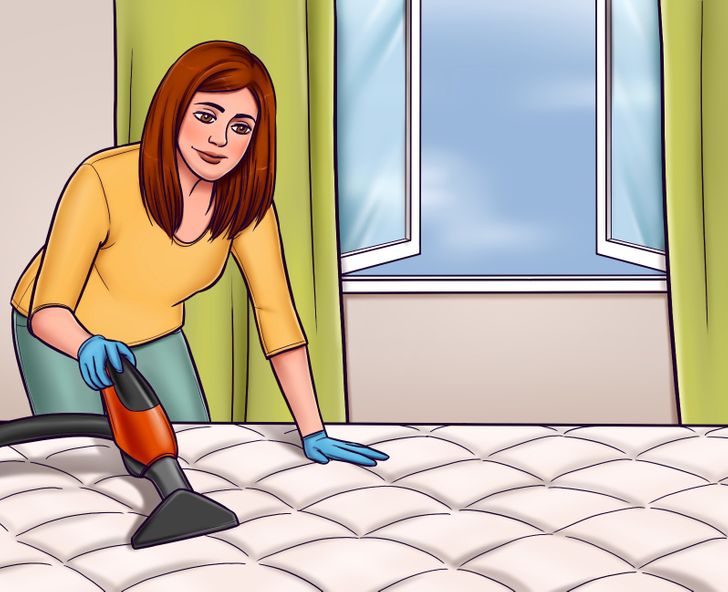
- Rotate the foam every 3-6 months so it wears equally on both sides.
- Follow the cleaning instructions provided by the manufacturer.
- Open your bedroom windows for better ventilation and air out your mattress regularly.
- To avoid damaging the coil, keep jumping children and pets off the bed.
- Vacuuming the bed cushion can also help reduce allergens and dust mites.
When did you change your mattress? How would you describe your sleep quality with your current bed?
Got some cool photos or stories and want to be featured on Bright Side? Send them all right HERE and right now. Meanwhile, we’re waiting!
Comments
Related Reads
The Top 15 Celebrities Everyone Adores, According to Ordinary People

10 Travelers Who Took “Breaking the Rules” Way Too Far

12 Stories That Had More Drama Than a Season Finale

13 Family Conflicts That Sound Straight Out of a Soap Opera

12 Stories That Prove Little Acts of Kindness Never Stay Little
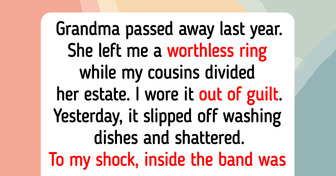
I Refused to Give Up My Extra Plane Seat to a Kid — Things Escalated Quickly

I Refuse to Be Treated Like the Family Nanny—And My Mom Chose Her Boyfriend Over Me

10 Grandmas Whose Kindness Became the Heart of the Family

I Refuse to Watch My Ex-Husband’s New Wife Raise My Children

10 Mothers-in-Law Who Know How to Stir the Pot

I Refuse to Lie for My Manager, Even If It Costs My Promotion, Salary, and Standing at Work

I Refuse to Split My Stepmom’s Inheritance With My Stepsiblings, I’m Not a Charity

